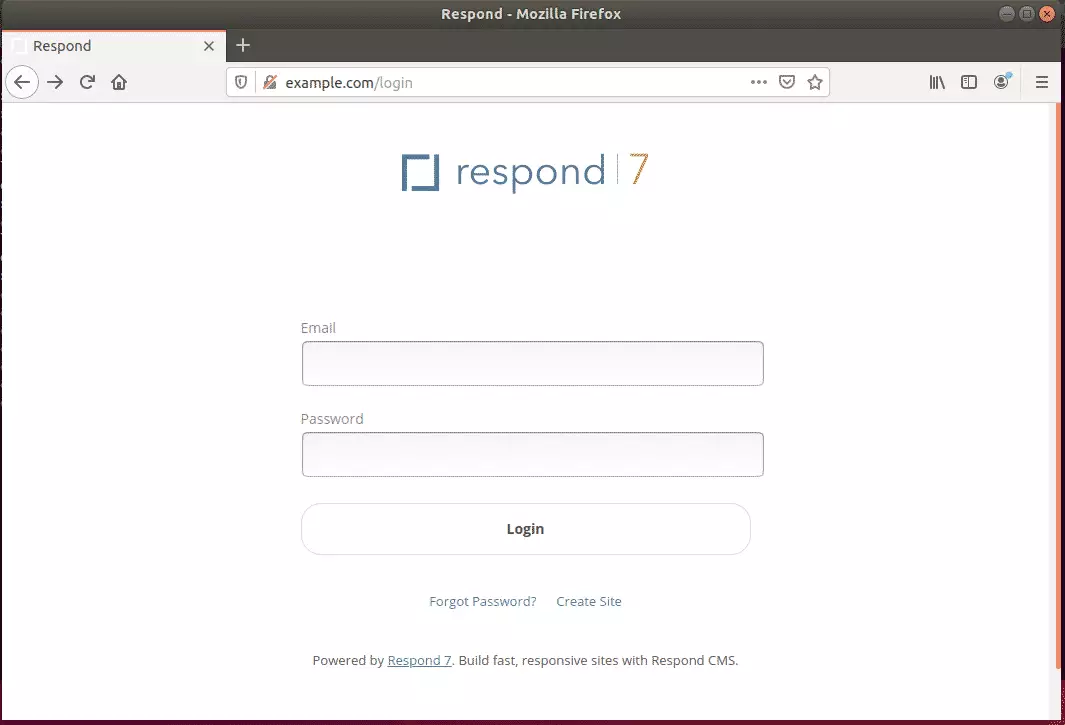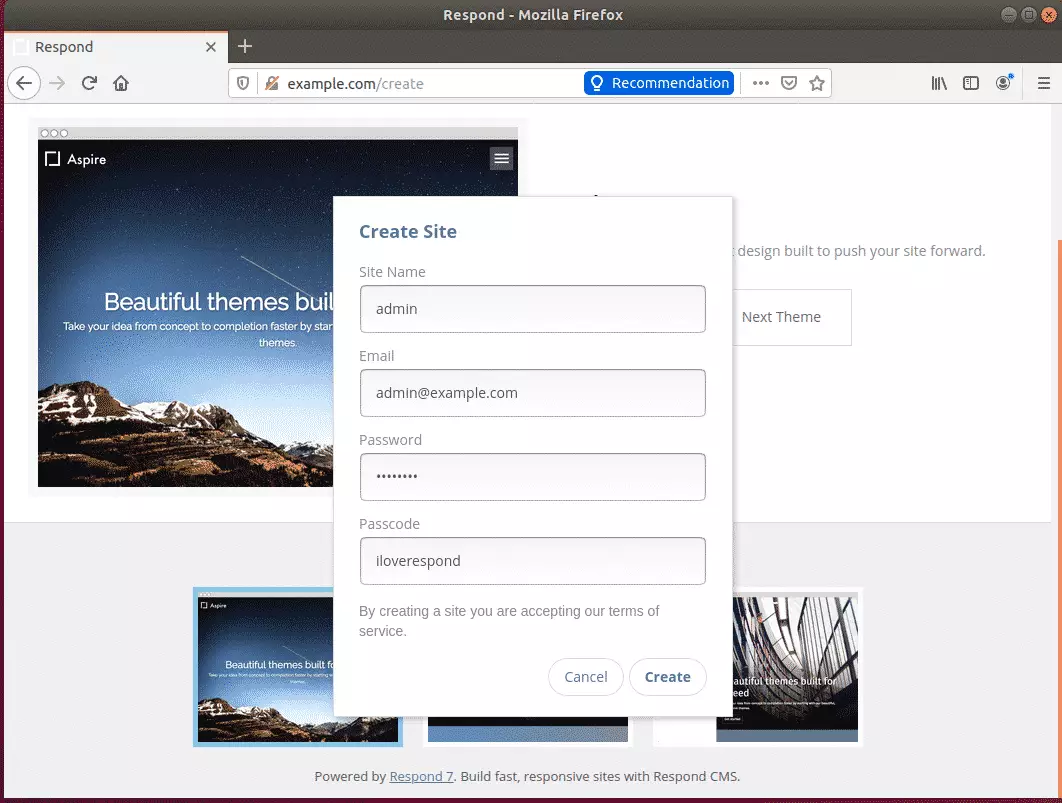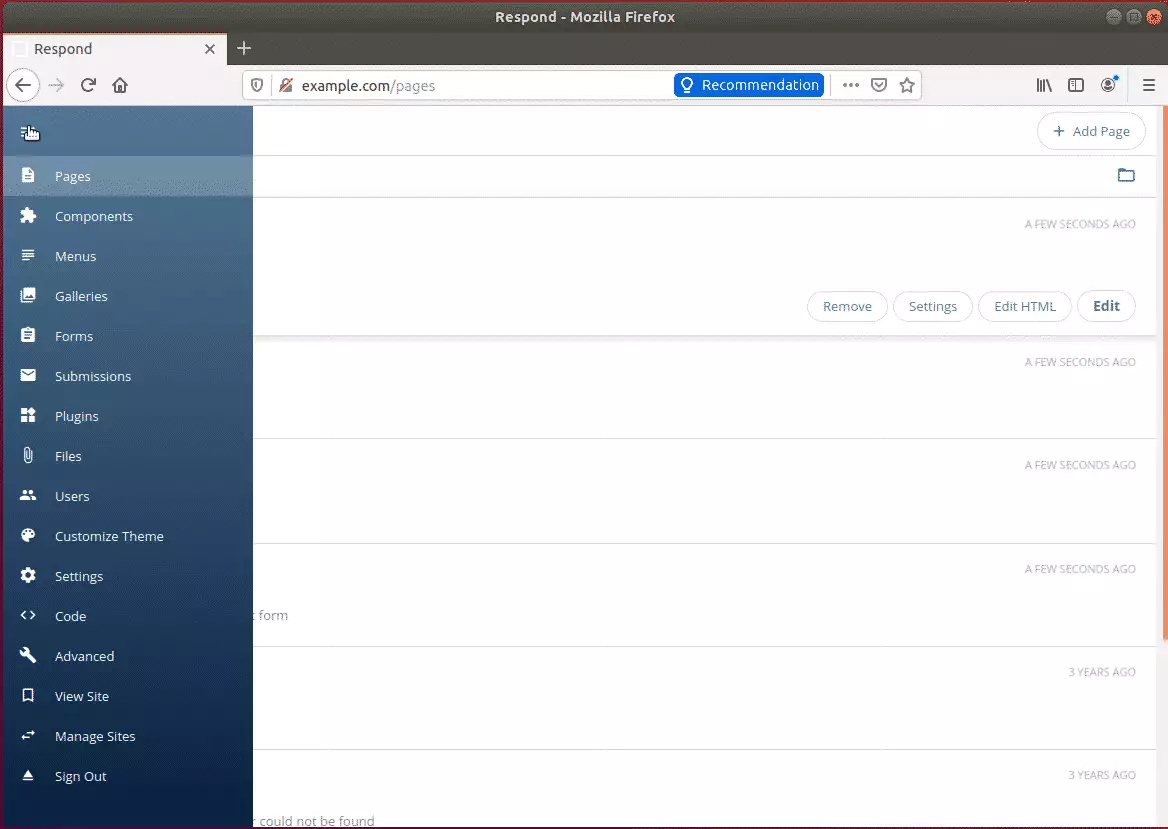This brief tutorial shows you how to install Respond CMS on Ubuntu 18.04 | 16.04 with Apache2 HTTP Server.
Respond is an open-source, white-label, flat-file, multi-site, swift CMS that offers features that may not be available to other PHP-based content management systems, like WordPress, Joomla, and Drupal.
Out of the box, Respond comes with 5 starter themes that give you a great starting point for your site. It has excellent features and a beautiful, easy-to-use visual editor that allows you to edit the content on the page.
When you use Composer to install Respond packages, you can easily upgrade from the command line with Composer, which is much simpler.
Respond also has a built-in tool that allows web admins to manage different modules and features of the platform.
For more about Respond CMS, please check its homepage.
To get started with installing Respond, follow the steps below:
Install Apache2 HTTP Server on Ubuntu
Apache2 HTTP Server is the most popular web server, so install it since Respond needs it.
To install Apache2 HTTP on the Ubuntu server, run the commands below.
sudo apt update sudo apt install apache2
After installing Apache2, the commands below can be used to stop, start, and enable the Apache2 service to always start up with the server boots.
sudo systemctl stop apache2.service
sudo systemctl start apache2.service
sudo systemctl enable apache2.service
To test the Apache2 setup, open your browser and browse to the server hostname or IP address, and you should see the Apache2 default test page as shown below. When you see that, Apache2 will work as expected.
http://localhost

Install PHP 7.2 and Related Modules
PHP 7.2 may not be available in Ubuntu default repositories. To install it, you will have to get it from third-party repositories.
Run the commands below to add the below third party repository to upgrade to PHP 7.2
sudo apt-get install software-properties-common sudo add-apt-repository ppa:ondrej/php
Then update and upgrade to PHP 7.2
sudo apt update
Next, run the commands below to install PHP 7.2 and related modules.
sudo apt install php7.2 libapache2-mod-php7.2 php7.2-common php7.2-gmp php7.2-curl php7.2-intl php7.2-mbstring php7.2-xmlrpc php7.2-mysql php7.2-gd php7.2-xml php7.2-cli php7.2-zip
After installing PHP 7.2, run the commands below to open the PHP default config file for Apache2.
sudo nano /etc/php/7.2/apache2/php.ini
Then, save the changes on the lines below in the file. The value below is an ideal setting to apply in your environment.
file_uploads = On allow_url_fopen = On short_open_tag = On memory_limit = 256M upload_max_filesize = 100M max_execution_time = 360 max_input_vars = 1500 date.timezone = America/Chicago
After making the change above, please save the file and close it.
After installing PHP and related modules, you must restart Apache2 to reload PHP configurations.
To restart Apache2, run the commands below
sudo systemctl restart apache2.service
To test PHP 7.2 settings with Apache2, create a phpinfo.php file in the Apache2 root directory by running the commands below
sudo nano /var/www/html/phpinfo.php
Then, type the content below and save the file.
<?php phpinfo( ); ?>
Save the file. Then browse to your server hostname followed by /phpinfo.php
http://localhost/phpinfo.php
You should see the PHP default test page.

Download Respond Latest Release
You may want to use the GitHub repository to respond to the latest release. Install Composer, Curl, and other dependencies to get started.
sudo apt install curl git curl -sS https://getcomposer.org/installer | sudo php -- --install-dir=/usr/local/bin --filename=composer curl -sL https://deb.nodesource.com/setup_10.x | sudo -E bash - sudo apt install nodejs
After installing Curl and Composer above, create a new home directory for Respond CMS. Then change into the new directory and download Respond packages from Github.
sudo mkdir -p /var/www/respond/app
cd /var/www/respond/app
sudo git clone https://github.com/madoublet/respond .
sudo npm install
sudo npm install -g gulp
sudo composer install --prefer-dist --no-dev
sudo gulp
Make the folders that store the site’s public and private data. To do that, run the commands below to set the correct permissions for the Respond to function.
cd /var/www/respond/app sudo mkdir -p public/sites sudo mkdir -p resources/sites sudo chown -R www-data:www-data public/sites sudo chown -R www-data:www-data resources/sites sudo chmod -R 755 public/sites sudo chmod -R 755 resources/sites
Next, copy the .env.example file in the app directory and create a new one called .env by running the commands below.
sudo cp .env.example .env
The environment file contains various settings for your site. It can be configured later after installing the CMS platform, but make sure to configure it before going live with your sites.
Configure Apache
Finally, configure the Apahce2 site configuration file for Respond. This file will control how users access Respond content. Run the commands below to create a new configuration file called Respond.conf.
sudo nano /etc/apache2/sites-available/respond.conf
Then copy and paste the content below into the file and save it. Replace the highlighted line with your domain name and directory root location.
<VirtualHost *:80>
ServerAdmin [email protected]
DocumentRoot /var/www/respond/app/public
ServerName example.com
ServerAlias www.example.com
<Directory /var/www/respond/app/public/>
Options +FollowSymlinks
AllowOverride All
Require all granted
</Directory>
ErrorLog ${APACHE_LOG_DIR}/error.log
CustomLog ${APACHE_LOG_DIR}/access.log combined
</VirtualHost>
Save the file and exit.
Enable the Respond and Rewrite Module
After configuring the VirtualHost above, please enable it by running the commands below.
sudo a2ensite respond.conf
sudo a2enmod rewrite
sudo systemctl restart apache2.service
Then open your browser and browse to the server domain name. You should see the Respond setup wizard to complete. Please follow the wizard carefully.
http://example.com/.

You can start by creating your first site. To find your passcode, look in the .env file.

Enjoy!

Congratulations. You’ve just successfully installed Respond CMS on Ubuntu 18.04 | 16.04.
You may also like the post below:

Leave a Reply